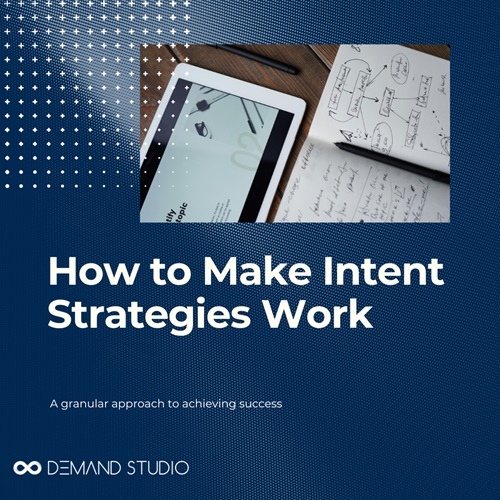How to make Intent Strategies Work
A granular approach to achieve success
As more and more b2b marketers integrate intent signals into their marketing plans, they quickly learn that they are not silver bullets. In order to get the best outcomes from intent-based marketing you have to develop a granular approach that dives into the details of the process.
Here are some common reasons for failure, whether you are building intent into programmatic advertising campaigns, driving an ABM strategy, integrating more insight into buyers’ journeys, or prioritizing sales activity and nurture programs.
- Lack of understanding of how the intent process works. Although the integration of intent has become more common, many marketers are unclear on how it works. How is the intent obtained, from whom, and how can it be actioned? Sometimes marketers think they should know all this and are afraid to ask their suppliers – who should of course be totally transparent. It is not made easier because the major suppliers do have different methodologies – but unless you know how it works you will not be able to deploy it correctly
- Businesses do not have the resources or stakeholder commitment required. Properly applied, intent-driven programs do not work like Content Syndication: pour in some budget at one end and outcome top of funnel leads. Intent signals should inform engagement at every stage of the buyer’s journey, so content, nurture streams, business development resources, MAP configuration, and sales teams all have to be ready to go.
- One size fits all doesn’t fit anyone. Intent only works properly if it is customized to the needs of a particular strategy or campaign. Data segmentation and integration, account focus, careful persona development, keyword selection, and language considerations are vital.
- Metrics are poorly measure and managed. Typically, marketers look at impressions delivered, CTRS, rankings and high-level scores. And not much else. But the devil is in the details. Which keywords and publications work best? How does coverage measure up by country and language? Which industries and personas respond best? And how does Intent relate to engagement metrics?
The Demand Studio delivers Intent in a new way. Here are some of the points that make us different:
- Our bidstream process weighs signals by the relevance of the publication – so research in a general newspaper for a particular keyword will score less than a search in a technical journal
- We offer a high degree of flexibility in the choice of keywords that reflect your market not our pre-existing and static menu
- We support foreign language keywords – essential for the SMB market in most European countries
- Our scoring algorithms include automatically engagement with your own sites and landing pages to produce a single ranking of accounts
- Our experienced team will go through not only high-level metrics but detailed outcomes to continually monitor and improve results



